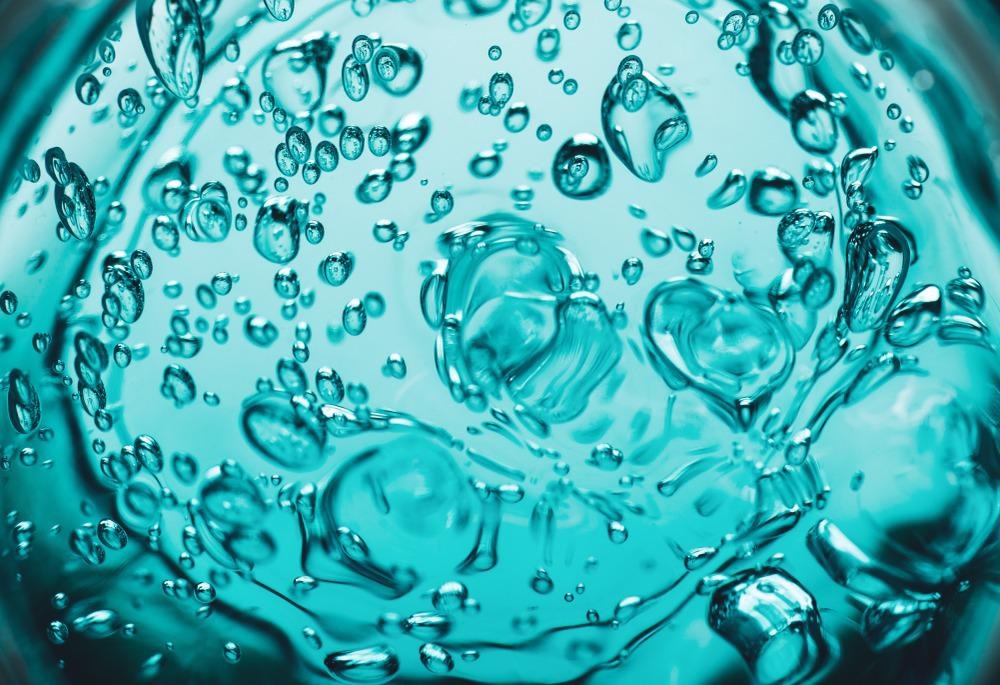Self-healing wearable, flexible sensors to detect human motion created using Janus nanosheets hydrogel are presented in a study published in the journal ACS Applied Polymer Materials.

Study: Wearable Flexible Sensors for Human Motion Detection with Self-Healing, Tough Guar Gum-Hydrogels of GO-P4VPBA/PDA Janus Nanosheets. Image Credit: Gilmanshin/Shutterstock.com
Hydrogels – The Answer to Self-Healing Wearables?
Wearable, flexible sensors (WFSs) that translate bio-mechanical or physiological inputs into observable signals are becoming increasingly important in soft actuators, health monitoring systems, and human-machine interfaces.
To facilitate the monitoring of human physiological stimuli, creating substrates that are allergy-free, stretchable, and sensitive is critical.
Hydrogels are thought to be a suitable basis for WFSs due to their fascinating biocompatibility and softness. On the other hand, traditional biomass-based hydrogels have weak mechanical characteristics, readily destroyed nanostructures, and low recoverability, severely limiting their usefulness in sensing applications. Thus, it is pertinent to build a compatible yet durable, self-healing wearable for multifunctional sensing applications that offer signal reliability and adaptability.
Guar Gum to the Rescue
Guar gum (GG), a naturally occurring polysaccharide with degradability and biocompatibility, offers potential for hydrogels; however, purely GG-based hydrogels exhibit poor mechanical characteristics, limited flexibility, and a sluggish self-healing response.
In principle, overcoming these issues involves adding an energy-dissipating mechanism via the construction of multilayer networks.
Hydrogel longevity can be improved using double network hydrogels, nanomaterial hydrogels, and hydrophobically related hydrogels. Nanomaterial hydrogels, for example, exploit the reversible segregation of polymer links and nanoparticles to achieve not just flexibility and toughness but also self-healing and recoverability. Therefore, creating appropriate nanoparticles to incorporate GG-Biomass-based hydrogel networks via various interactions is a viable technique to increase the flexibility and self-healing efficacy of biomass hydrogels.
Janus Nanosheets and How They Can Help
Anisotropic materials having asymmetric architectures or characteristics are referred to as Janus nanosheets (JNs). This asymmetric structure equips JNs with unique spatial characteristics that may be utilized to study self-assembly and target identification. In terms of compositional features, JNs possess two distinct or opposing qualities.
As a result, JNs are versatile and can handle more difficult environmental criteria. JNs can combine numerous traits and qualities into a single particle. These characteristics make developing accurate and simple ways to synthesize JNs appealing.
Research on Preparation of Janus Nanosheets
Many procedures for creating JNs have been documented to date, namely Pickering emulsion (PE), self-assembly methods, phase separation, and micro-fluidics, among other methods. It is important to consider that PE layouts offer the advantages of particular compositional characteristics of JNs. Taking advantage of these characteristics, such as bi-functionality, ease of design, and regularity of JNs, a range of functionalized JNs hydrogels with self-healing and biomechanical capabilities were produced. As a result of these experiments, it is worthwhile to investigate if incorporating multipurpose JNs into hydrogel-based WFSs may result in fatigue-resistant and highly sensitive sensors.
Results of the Study
In this study, the biomass hydrogels containing JNs demonstrated excellent biocompatibility, resilient flexibility, self-healing efficacy, fatigue resistance, and high sensitivity. The team effectively constructed conventional Graphene Oxide (GO)-based JNs by merging reversible addition−fragmentation chain transfer (RAFT) polymerization in a PE environment with mussel-inspired biochemistry.
JNs were inserted into a network of Guar Gum/Polyvinyl alcohol (GG/PVA) biomass hydrogels as a reinforcing agent to produce nanomaterial hydrogels using freeze and thaw cycles. JN hydrogels were shown to have excellent physical strength and self-healing efficacy owing to their multifunctional capacity to construct many reversible interactions. Furthermore, the JN hydrogel-based sensor had relatively high sensitivity, a quick reaction time, and a reasonable fatigue threshold.
The JN hydrogels demonstrated adherence to various substrate surfaces while causing no discomfort to skin cells. The sensor demonstrated exceptional sensitivity and stability for use as a pressure sensor and the capacity to track varied human motions without hysteresis. In a nutshell, the well-designed JN hydrogel-based sensor offered a wide range of applications for wearable electronic devices.
Reference
Zhang, N., Zhao, G. et al. (2022). Wearable Flexible Sensors for Human Motion Detection with Self-Healing, Tough Guar Gum-Hydrogels of GO-P4VPBA/PDA Janus Nanosheets. ACS Applied Polymer Materials. Available at: https://doi.org/10.1021/acsapm.2c00028
Disclaimer: The views expressed here are those of the author expressed in their private capacity and do not necessarily represent the views of AZoM.com Limited T/A AZoNetwork the owner and operator of this website. This disclaimer forms part of the Terms and conditions of use of this website.